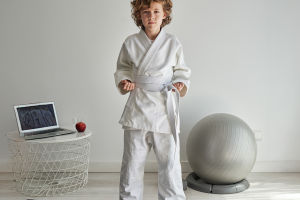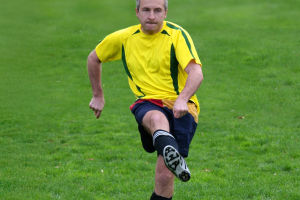Physical activity is one of the best gifts for children's overall development. It supports balance, strength, confidence, and emotional well-being. But knowing when to start and which activity fits best can be a challenge.
So... Lykkers, here's a practical guide to choosing the right activity at the right time — all in a simple and cheerful way.
Understanding the Right Age to Begin
From 0 to 3 Years
This is the ideal stage for introducing water activities. Water-based movement builds early coordination and comfort in motion. As soon as toddlers begin walking, short walks of 20–30 minutes, three times a week, can be part of their routine to strengthen muscles and stimulate curiosity.
From 3 to 5 Years
Children at this age benefit from playful movement with light structure. Introducing tools like soft balls and simple games helps connect movement with fun. Activities such as basic gymnastics and guided exercises boost coordination, rhythm, and spatial awareness. Running freely should also be encouraged — it's a natural way for young children to explore their energy.
From 6 to 10 Years
This phase is full of growth and development. It’s an ideal time to start learning more structured activities and simple techniques. Movement becomes more precise, and group interaction begins to matter more. At this age, sports encourage cooperation, focus, and the ability to handle outcomes, making it a key period for lasting physical habits.
Choosing the Right Activity Based on Personality
Independent Activities Without Contact
These activities include running, swimming, gymnastics, tennis, cycling, and skiing. They are best suited for focused children who enjoy improving through individual progress. The rewards are personal achievements and a strong sense of independence.
Independent Activities With Light Contact
Activities such as fencing or martial disciplines fall into this category. They help children focus, stay present, and learn self-control. These are especially helpful for children who may be impulsive, as they teach calm action, or for more cautious children, as they build boldness and self-assurance.
Group Activities With Contact
Popular options like football and basketball offer strong social interaction. They teach children how to work together, rely on teammates, and move toward shared goals. These activities are valuable for learning how to support others, recognize different skills in teammates, and manage group emotions in moments of success or disappointment.
Group Activities Without Contact
Examples include volleyball and other cooperation-based games. These are excellent for more reserved children who still enjoy being part of a team. The focus remains on collaboration, support, and joint decision-making without the physical strain of direct contact.
A Special Mention: Activities Close to Nature
Nature-Based Activities
Outdoor options like sailing or hiking don't always fit into the common categories. Yet, they offer powerful lessons in independence, patience, and respect for the environment. These activities also help children handle unexpected challenges and strengthen their ability to adapt.
Helping Children Find the Joy in Movement
Let Curiosity Guide the Way
Instead of pushing for early competition, focus on the excitement and variety of movement. Try different things and observe where the child smiles the most. Physical activity should always feel like a joyful adventure.
Support Without Pressure
Every child moves and grows at their own pace. Encourage regularly, but let the motivation come from within. A child who feels supported is more likely to enjoy staying active in the long run.
Build Healthy Habits for Life
Introducing movement as play — not as performance — creates a positive relationship with activity. This sets the foundation for a strong, active future.
Conclusion
Helping children discover movement in a positive way is one of the greatest paths to lifelong well-being. Each stage brings its own rhythm and needs, and there's no perfect formula — only playful steps forward.
Choose activities that match the child’s interests, introduce them gradually, and most importantly, keep the experience fun. With this friendly approach, physical activity becomes not just good for the body but a source of happiness too.


